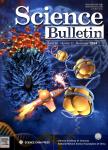Variation at the transcriptional level among Chinese natural populations of Arabidopsis thaliana in response to cold stress
Variation at the transcriptional level among Chinese natural populations of Arabidopsis thaliana in response to cold stress作者机构:National Laboratory of Protein Engineering and Plant Genetic Engineering Peking-Yale Joint Center for Plant Molecular Genetics and AgroBiotechnology College of Life Sciences Peking University Beijing 100871 China College of Biological Sciences China Agriculture University Beijing 100094 China National Plant Gene Research Center (Beijing) Beijing 100101 China
出 版 物:《Chinese Science Bulletin》 (中国科学通报)
年 卷 期:2008年第53卷第19期
页 面:2989-2999页
核心收录:
学科分类:0303[法学-社会学] 03[法学] 030303[法学-人类学]
基 金:Supported by the National Basic Research Program of China (Grant No. 2006CB100105)
摘 要:The Arabidopsis 25K GeneChip (ATH1, Affymetrix) was used to make a survey of the variation of the transcriptional profiles among 5 Chinese natural populations of Arabidopsis thaliana under cold treatment. In normal growth condition, the expression level of 2.26% (513 genes in the population from Jiujiang, Jiangxi, JXjjx) to 6.52% (1482 genes in the population from Tongliang, Chongqing, CQtlx) genes was 2-fold higher than that of Col ecotype. Under cold treatment, the expression of 12.84% (2920 genes in the population from Chenggu, Shaanxi, SXcgx) to 19.46% (4426 genes in the population from Qinghe, Xinjiang, XJqhx) genes was up- or down-regulated by at least two-fold that of their controls. In general, most of up-regulated genes might be the genes essential for plant surviving at low temperature, such as genes in CBF pathway and the genes responsible for synthesizing molecules accumulated for cold tolerance. However, each natural population had some specific genes induced under cold treatment. The data indicated that some of the cold-responding genes were differentiated among the populations distributed in the natural habitats with different climate conditions. CBF3, one of the key tran-scription factor genes in cold responding pathway, showed significant differences in expression among populations. The sequence analysis indicated that the changes in its regulation region caused the dramatic difference in the expression pattern. Further studies on the correlation of the function of the differentially expressed genes and the cold tolerance in different populations may provide some new insight into the molecular mechanism of adaptation to local environment in Arabidopsis thaliana in China.



